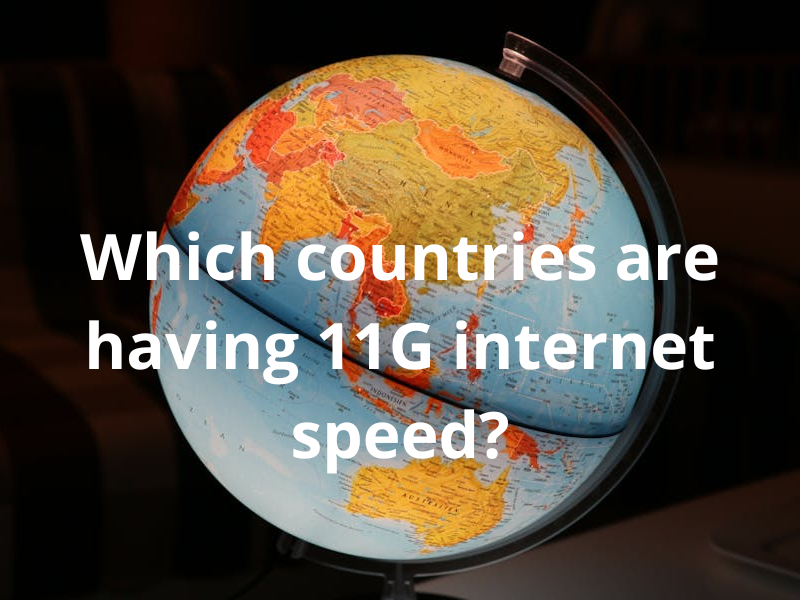Do any countries have 11G internet speed in 2025?
Short answer: No — there is no such thing as an “11G” mobile-network generation in 2025. The telecom industry is actively researching and prototyping 6G, but formal standards, commercial rollouts or any country-level 7G–11G deployments do not exist.
What “G” means (quick primer)
When people say “1G”, “4G” or “5G”, they’re talking about generations of cellular mobile standards — technical families defined over many years by industry bodies (and later standardized). Each “G” bundles radio technology, spectrum usage, network architecture and agreed performance targets (latency, peak and typical throughput, etc.). The international telecom community (standards bodies like ITU and 3GPP) coordinates these definitions. By 2025 the industry is focused on completing the transition to mature 5G deployments and early work on 6G — not on any formal “11G.”
Why “11G” as a label is misleading
There are two reasons confusion sometimes appears:
-
Wi-Fi naming vs mobile “G” naming. Wi-Fi standards use names like IEEE 802.11g (pronounced “eleven-g”), which is a local wireless LAN standard from the 2000s and has nothing to do with mobile generations such as 5G/6G. If you search for “11g” you’ll find old Wi-Fi pages — that’s different from a hypothetical “11G” cellular network.
-
Marketing spin. Vendors or marketers sometimes use exaggerated terms (e.g., “beyond 5G”, “5G+”, or fanciful labels) that can be mistaken for new formal generations. Always check whether a claim references an international standard or is simply promotional language.
Reality in 2025: where the industry actually is
-
5G is widely deployed globally and continues to mature (5G Standalone, 5G Advanced). Many countries and carriers are expanding coverage and refarming spectrum to improve capacity.
-
6G is in active research, prototyping and early international study. Industry groups (GSMA, Ericsson, major operators and standards bodies) are publishing roadmaps and study items that aim at a standardization path toward the late 2020s / early 2030s. Commercial 6G rollouts are not expected globally until closer to the 2030s.
-
No credible authority or operator recognizes or implements anything called “11G” in 2025 — there’s no standard, no specification body defining 11G, and no country reporting nationwide 11G service. (If you encounter claims of “11G” in marketing, treat them skeptically and ask for technical details.)
Why we won’t see “11G” any time soon (technical & practical reasons)
-
Standards take years. Moving from research to global standard requires study items, consensus in bodies like ITU and 3GPP, and then phased releases — this is multi-year work. 6G itself is only in study and prototyping in 2025.
-
Spectrum constraints. Each new generation often requires new spectrum planning and reallocation (low, mid and high bands). Governments and regulators must coordinate — a slow, complex process.
-
Economic & device ecosystem. Devices, chipset vendors, operators and infrastructure suppliers must all invest; each generation is a decade-scale ecosystem shift, not a piecemeal marketing change
How to interpret claims about “super-fast” or future-generation networks
If you read a headline like “Country X now has 11G speeds,” ask:
-
What exactly do they measure? Peak lab throughput is different from real-world user experience.
-
Who is the authority? Trusted sources are international standards bodies (ITU), industry groups (GSMA), major vendors (Ericsson, Nokia) and respected news outlets.
-
Is it lab demo vs commercial service? Demos can show experimental waveforms and very high speeds over short distances in controlled settings. That doesn’t equal nationwide service.
If no country has 11G, what are the fastest networks in 2025?
Fastest real options in 2025 are:
-
Fixed broadband (fiber) — many countries lead with multi-hundred Mbps to multi-Gbps fiber-to-the-home plans.
-
5G Advanced and experimental 6G testbeds — carriers in advanced markets are enhancing 5G with more spectrum, bigger channels and better core networking. Major vendors show 6G prototypes but not commercial 11G.
Practical advice for consumers and businesses
-
Don’t trust “G” claims without evidence. Ask for links to standards, lab reports, or independent speed tests.
-
Measure what matters. For users, latency, reliability and coverage matter more than a marketing “G” label. Use reputable speed tests and read independent reports.
-
Watch 6G developments. Governments and big operators are actively planning for 6G (spectrum, R&D funding). Expect real commercial timelines in the late 2020s / early 2030s.
If you’re searching for “11G” because you want the fastest possible internet in 2025, focus on real-world metrics: fiber availability, 5G coverage (Standalone), low-latency networks for your use case, and reputable independent speed and coverage reports. The label “11G” is not a recognized technical or regulatory milestone in 2025 — it’s either a confusion with Wi-Fi names or marketing hype. Keep an eye on industry reports about 6G — that’s the logical next step the telecom world is actually planning for.
FAQs (quick answers)
Q: Which countries have 11G in 2025?
A: None. No standards or commercial deployments called “11G” exist in 2025.
Q: Is “11g” the same as Wi-Fi 802.11g?
A: No — 802.11g is an older Wi-Fi (WLAN) standard from the 2000s and unrelated to cellular generation names.
Q: When will 6G arrive?
A: 6G work is under way; early deployments are not expected until around the 2030 timeframe, with standardization and prototyping happening in the mid-late 2020s.
